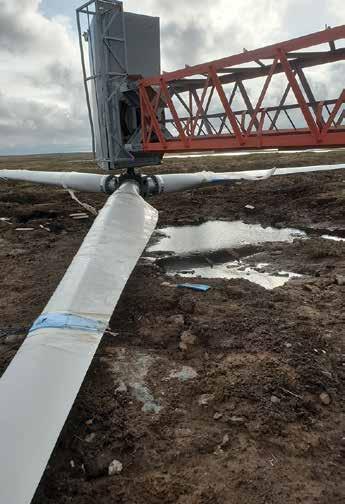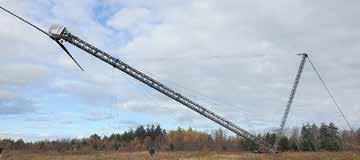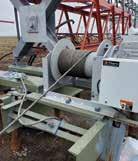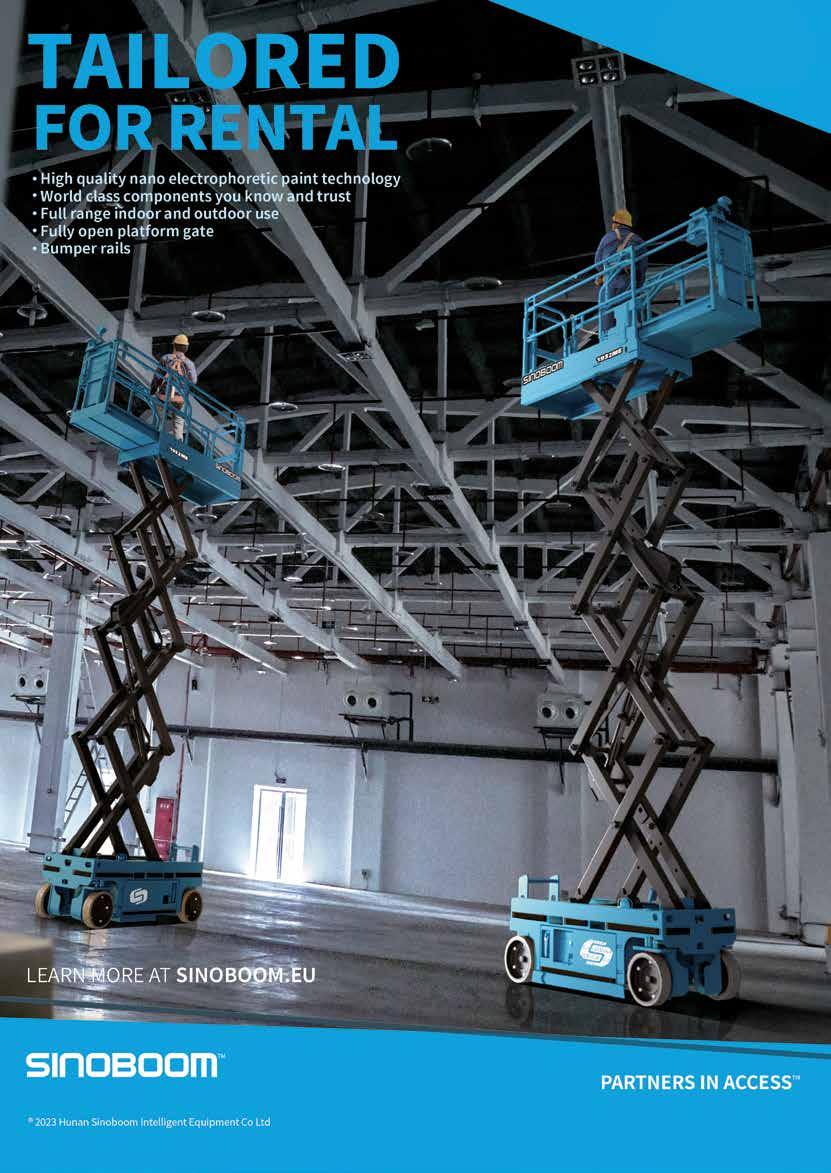
6 minute read
Gin Poles- A tonic for remote wind installations
Gin Poles- A tonic for remote wind installations
Anyone who’s ever tried installing anything significant in remote areas knows the uphill battle it can be to transport and then use a crawler or other large crane. So, when Frontier Power Systems was asked to supply wind power generation systems for customers in some of North America’s most challenging terrain, the Canadian company turned to old fashioned gin poles to get the job done. Saul Chernos reports.

Gin poles have absolutely nothing to do with the beverage distilled from juniper berries, though one might enjoy a tipple after a gruelling day in harsh conditions. The term gin pole is in fact derived from gyn, a tripod shaped derrick, which uses a pulley or block and tackle on its upper end to lift objects into place.
The pole’s lower end is braced or set in a shallow retaining hole or socket and positioned so that the upper end lies above the object to be raised. The pole is then secured with guy ropes which can be manipulated to move the load as required.
Over the years, gin poles have hoisted everything from roof trusses to weathervanes. Now, Prince Edward Island-based Frontier is pairing them with winches to leverage modest sized wind turbine towers into place in some of North America’s most isolated communities.
“A gin pole can be a viable way of replacing a crane when conditions aren’t compatible with using a crane,” said Frontier president Carl Brothers. It should be noted that the turbines small communities use are insignificant in comparison with those feeding power grids. While an 18MW behemoth in an industrial park in China’s Shandong province stands as the current record holder, Frontier’s customers are typically looking to offset diesel generators with emissions free power. So, its turbines trend in the 100KW range, with comparably short towers of 32, 40 or 50 metres in height and components maxing out at five to six tonnes.

While Frontier often uses conventional cranes to lift towers and other heavy materials, the conditions in remote ‘fly-in communities’ such as Atmautluak and Chefornak in western Alaska are simply too challenging for a crane of any significant size.
The only practical way in for heavy equipment is by barge during the summer months, when waterways aren’t hampered by ice. The ground is also boggy and soft - muskeg is more predominant than rock - so cranes can’t be set up and tower anchors bolted into place until the wintertime freeze. By that time, much of Alaska is bitterly cold, snowy and short on sunlight.
“March and April are usually the construction season for this sort of work,” says Brothers.
“We can do some work in the fall, but winter is very difficult in these areas, and unless you’ve got really exceptional soil conditions there’s not much to be done in the summer in most of the communities we have worked.”
The harsh conditions set the stage for the lightweight gin poles, which are relatively easy to bring to site and work with. While turbine towers are usually installed in sections, gin poles lift theentire assembly as a fully constructed entity.

Frontier not only designs wind turbines but also configures its own gin pole and hydraulic winch systems to suit the job at hand. “It is a completely engineered package and you just piece it together like a Meccano set,” says Brothers, noting the taller the tower, the longer the gin pole by a two to one ratio. “On a 50 metre tower, we use a 25 metre gin pole. The taller the tower and the heavier the turbine, the more force you need.”
Crews begin by setting up gin pole sections by hand, with help from a loader or skid steer rented or borrowed from another user in the community. The next step is to do the same with the tower structure - setting the pieces on the ground horizontally and manoeuvring them into place.
Key to the gin pole’s function is the hydraulic winch. Frontier says that it could use electric winches, but finds that they are heavier and require larger generators than are generally available on location.
Frontier’s winches hold up to 365 metres of ropeand are typically reeved with between 10 and 14 parts of line. “You reduce the load on your winch line, but multiply the force with your block assembly, providing the force we need to pull up a heavy load with a relatively small winch.”
While manoeuvres are generally straight forward, they do require pre-engineering just as a crane lift does. “You need to consider your foundation,” says Brothers, noting that access and load considerations are critical regardless of the device used for a lift. “Before we ship our turbines, we need all the geotechnical information so we can design the anchorage, and we need the site’s physical layout so we can ensure the turbines can be laid out and assembled. We’ll also ask the construction company to ensure the access point from the barge landing to the site is suitable for delivering the equipment.”
Brothers hesitates to discuss costs in detail because the specific nature of a project ultimately dictates the price tag, and gin poles can be less expensive or more expensive than cranes.

“There’s a continuum where it’s much more attractive, almost the same, to much less attractive. If you have to bring a crane into a remote community and leave it there for a year, that’s a pretty expensive undertaking. That often happens in these projects.”
The process of erecting a tower and turbine can also be slower with a gin pole than with a crane, and even in isolated locales there are circumstances where gin poles simply aren’t feasible. Brothers points to one job he is currently planning in Ramea, Newfoundland, where hilly terrain and steep slopes don’t offer the flat ground that crews need to assemble their gin pole or turbine. “In some mountainous areas, it’s just not practical. In that case we would use a crane or a boom truck.”
The bottom line, says Brothers, is selecting the tool that makes sense for the project. “Every location is different, the specific requirements of each project need to be engineered to select the most economic equipment and procedures to use.” ■












